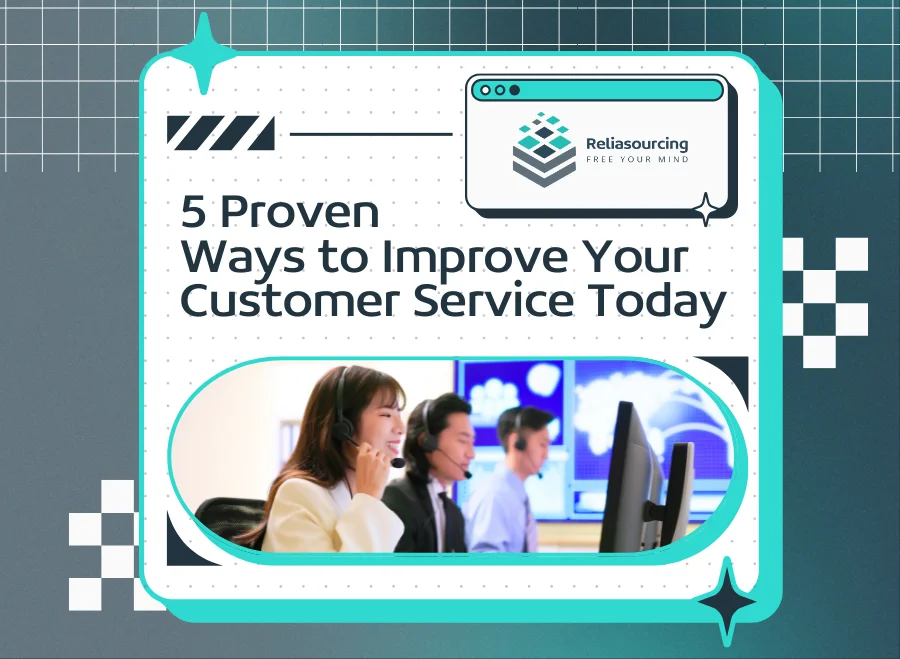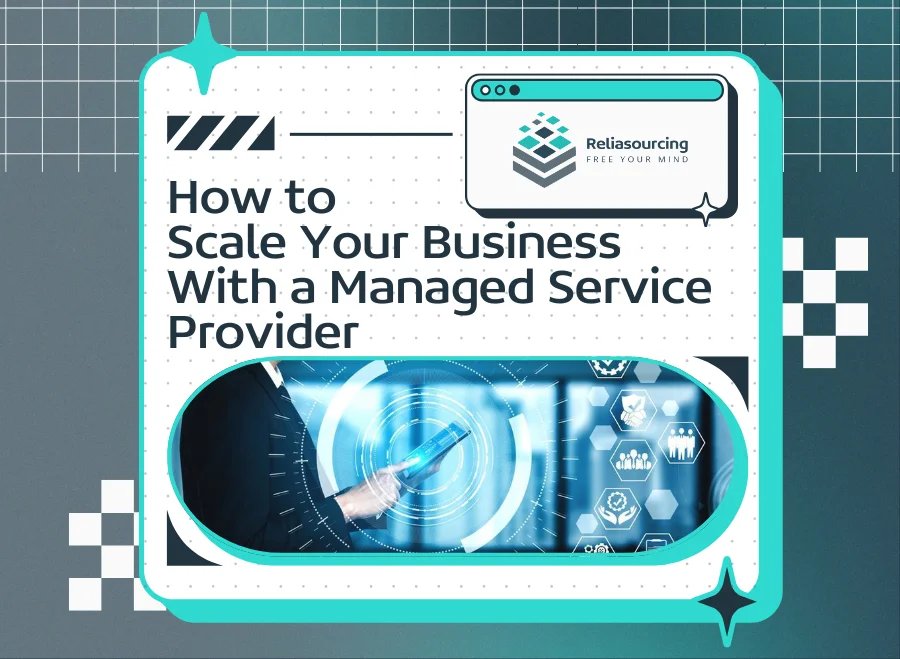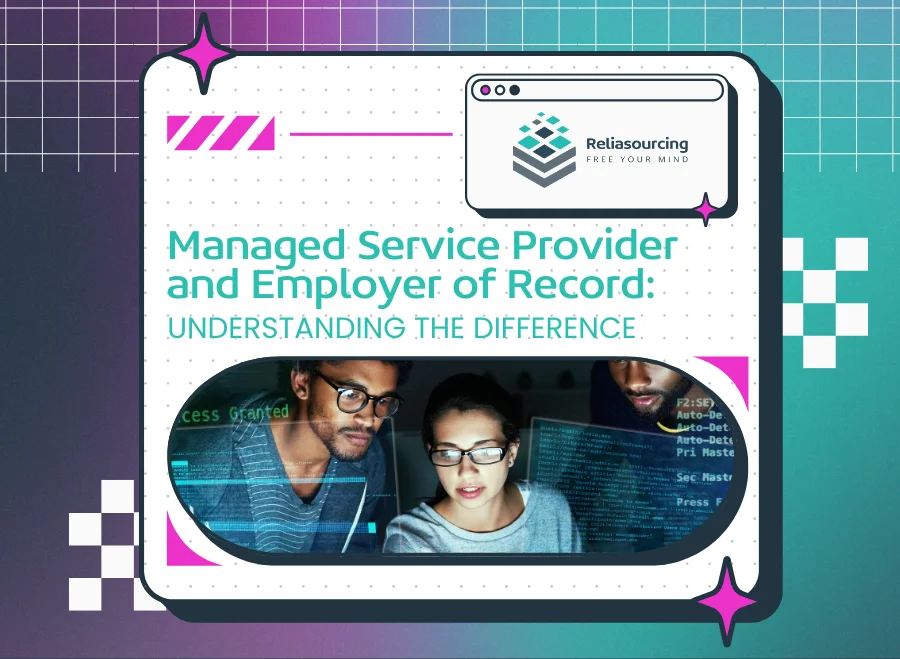Customer service has evolved from an after‑sales courtesy into a core pillar of business strategy. In a market where products and prices often look identical, meaningful human support is what keeps customers loyal and spreads positive word of mouth. Great service builds emotional connections, encourages repeat purchases and cushions you against the inevitable missteps that come with scaling.
Many founders, however, underestimate how critical frontline interactions are to growth, not knowing it costs far more to acquire a new customer than to keep an existing one, and even modest improvements in retention can dramatically increase profits. Scaling a business across industries, from SaaS and e‑commerce to gaming and finance, means scaling support, whether in-house or outsourced. Customer support is a matter of making or breaking brand trust.
This article outlines five proven ways to improve customer service today and shows how an expert partner like Reliasourcing helps start‑ups and scale‑ups transform service from a cost into a revenue-generating asset. And as a plus, a downloadable checklist at the end gives you a practical roadmap for taking action.
1. Train and Empower Your Customer Service Team
Customers rarely forgive unprepared agents. In a Qualtrics study, 66% of customers expect brands to understand and meet their personal needs, and 60% believe businesses need to care more about them. Meeting those expectations starts with training. Rapid growth often exposes gaps in product knowledge, empathy and problem‑solving; without a structured program, staff struggle to deliver consistent experiences.
Tactics that work

Develop comprehensive training programs. New hires should master your products or services, but training must go beyond technical knowledge. Soft‑skill modules on listening, empathy, de‑escalation, and problem-solving prepare agents for emotionally charged conversations. In our case study, “Elevating Efficiency: The Impact of Tailored Outsourcing and Expert Training on Scaling Loan Processing Operations,” we introduced our loan‑processing client to a 10‑day training plan and weekly refresher sessions. The structured learning we employed lifted the pass rate on their customer‑service representative (CSR) certification tests to 83% and 88% for recent cohorts, demonstrating how investing in people produces measurable gains.
Download Loan Processing Case Study Here
Incorporate role‑playing and e‑learning. Simulated calls and chat scenarios give agents a safe space to practice empathy and troubleshooting. Digital courses and micro‑learning modules accommodate varied schedules and encourage continuous improvement.
Encourage autonomy and accountability. Empower agents to resolve issues without escalating every decision to managers. Autonomy fosters ownership and builds confidence.
Real‑world insight
Yaniv, Head of Training at CreditSense, describes Reliasourcing’s impact:
“We’ve been with Reliasourcing for over two years, and the experience has been exceptional. From day one, they’ve taken full responsibility of our call center operations. But what truly sets them apart is their commitment to continuous improvement and client satisfaction.
Reliasourcing truly invests in the development of the workers they supply, and this has made a difference in the quality and consistency of our customer interactions. And they regularly check in with us to make sure our needs are being met and are always open to feedback. I can confidently recommend Reliasourcing to any company looking for a reliable, professional, and proactive outsourcing solution.”
For start‑ups, building a culture of growth matters as much as building a product. That’s why businesses choose an outsourced team that responds confidently to diverse queries and acts as your brand’s human voice.
Industry‑specific training considerations
Not all customer service teams are created equal. Any industry presents unique challenges that require specialised training.
E‑commerce teams need deep knowledge of order management, returns policies, and fraud prevention to quickly resolve shipping problems and reassure anxious shoppers.
Financial services and loan‑processing companies operate in a highly regulated environment, so agents must be trained on compliance, data privacy, and specialised processes like Instant Bank Verification. Reliasourcing’s loan‑processing training program includes recurring sessions on IBV and quality control, ensuring agents meet rigorous regulatory standards.
Tailored programs like this help agents understand products and likewise adhere to industry‑specific requirements, ultimately reducing errors and boosting customer confidence.
2. Actively Listen and Respond to Customer Feedback
Customer sentiment is a gold mine for improvement, albeit often undervalued. Failing to listen not only frustrates customers but also drives churn. Acquiring new customers can cost five times more than retaining existing ones, and increasing customer retention by just 5% can raise profits by 25–95%. U.S. companies collectively lose more than $100 billion each year due to avoidable switching, and roughly a third of customers will consider changing brands after a single poor experience. Figures like these illustrate why systematic listening isn’t optional, since doing so is an investment in profitability.
Tactics that work
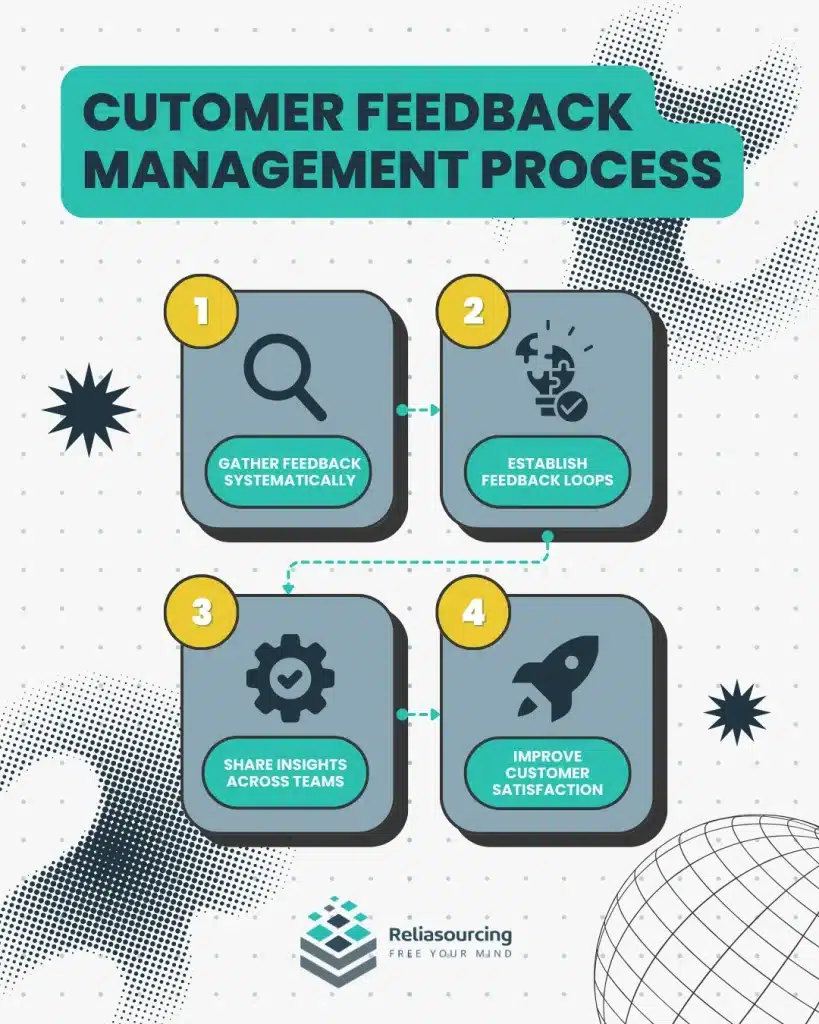
Gather feedback systematically. Implement surveys like Customer Satisfaction (CSAT), Net Promoter Score (NPS), and Customer Effort Score (CES) after every interaction. Measuring these scores helps you pinpoint gaps and understand whether customers are likely to repurchase after interacting with your team. Combine quantitative data with qualitative feedback from reviews, social media, and direct conversations to capture the full picture.
Establish feedback loops. Collecting data isn’t enough. You need to act. Reliasourcing’s branding‑tech client set up callback routines to follow up on unresolved issues in our case study titled “Designing Better Outcomes: How Reliasourcing Transformed a Branding Tech Company’s Customer Service Into Revenue Growth.” Our move to combine surveys with proactive callbacks allowed the client to raise its customer‑satisfaction (CSAT) scores from 3.7 in late 2024 to 4.7 by May 2025, even as call volumes climbed. Transparent loops show customers you’re listening, which in turn drives loyalty.
Download Branding-Tech Case Study Here
Share insights across teams. Feedback should inform product development, marketing, and training. When Reliasourcing’s loan‑processing agents noticed repeated questions about Instant Bank Verification, trainers created specialised modules to address the confusion. The cross‑pollination reduced friction, sped approvals, and improved conversion rates.
Real‑world insight
Reliasourcing’s retention program illustrates the return on listening. In the branding‑tech case study, proactive save attempts and upgrade recommendations turned follow‑ups into a revenue‑preserving engine. Retention calls generated 70% of total revenue during the engagement period, proving that feedback isn’t just about satisfaction. Feedback is about identifying opportunities to deepen relationships and prevent churn.
3. Implement Smart Technology to Optimise Interactions
The workload facing modern support teams is expanding. Research reports that 93% of customer service teams say expectations are higher than ever, 80% of people switch brands due to poor customer experience, and 43% say they’re likely to switch after a single negative interaction. 79% of companies view customer experience as a revenue driver. These pressures push businesses to adopt automation and analytics to deliver fast, personalised responses at scale without burning out their teams.
Tactics that work
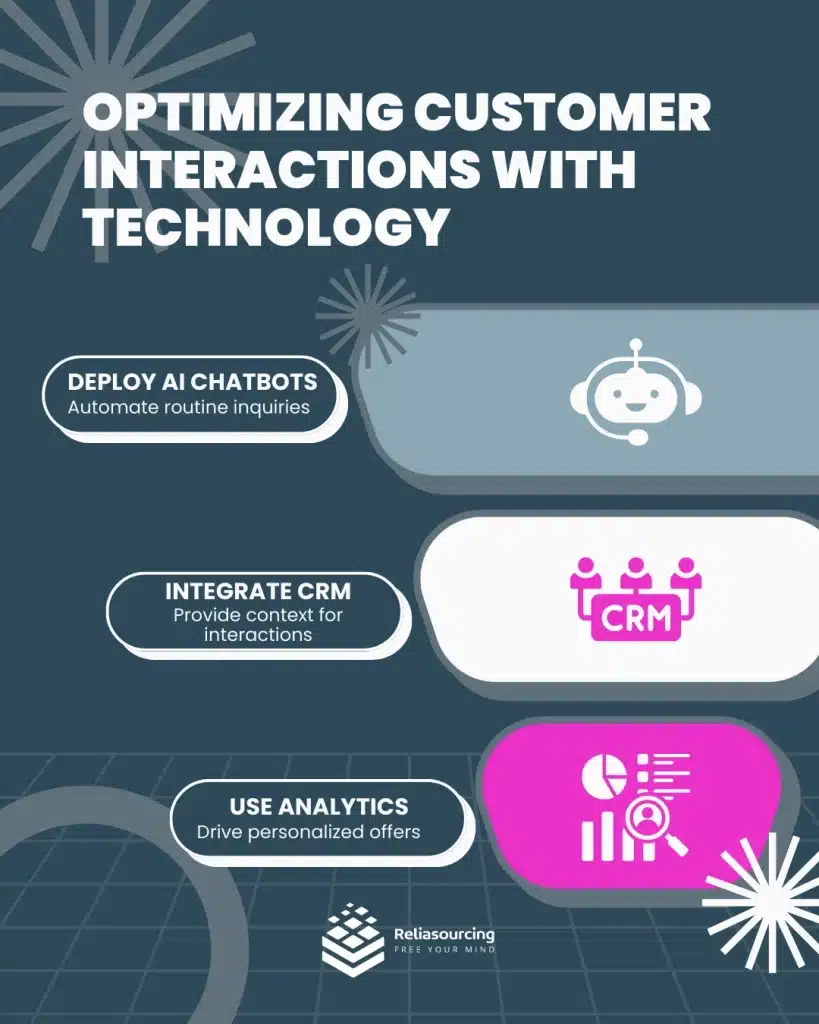
Deploy AI‑powered chatbots and self‑service tools. Bots handle routine questions instantly, freeing agents to focus on complex issues. As chatbots become more sophisticated, they should be integrated into a single knowledge base so that answers stay consistent across channels. Self‑service portals and knowledge articles empower customers to solve simple issues on their own, reducing ticket volume and wait times.
Integrate a CRM for context. A unified customer‑relationship management system gives agents complete visibility of prior interactions, orders, and preferences, thereby reducing repetition and fostering more human conversations. CRM data can trigger personalised follow‑ups and loyalty offers combined with marketing automation.
Use analytics for real‑time decision‑making. In our case study “Scaling VIP Gaming Sales: How Reliasourcing’s Data-Driven and Personalized Outsourcing Boosted VIP Monetization Through Upselling,” our gaming client leveraged data‑driven segmentation and hourly spending analysis to personalize offers. Through four phases of process optimisation, the offshore team was managed well, exceeding its initial goal of $4,000 Average Daily Revenue (ADR) in January 2024 and even climbing to $19,655 by October 2024. At the same time, Average Revenue per Paying User (ARPPU) nearly tripled from $3.25 to about $9.05, while the percentage of paying users held around 12–20% of daily active users. Those gains were fueled by tools like real‑time scorecards, behavioural segmentation, and quality‑assurance coaching, showing how technology amplifies human intuition.
Download Gaming Sales Case Study Here
Real‑world insight
In a recent interview, Amir Borsok, Reliasourcing’s Head of Business Development, supports the integration of new and rising tech, specifically artificial intelligence (AI), into the outsourcing industry, emphasizing a people-first tech adoption:
“We’re not here to replace agents, but to give them almost like an AI superpower, if you will…. whether it’s chat, voice, transcribing features, language adjusters, accent customization, chat support, a lot of suggestive features that comes up, for example, on an agent’s screen.”
Barak, Director of Business Development at QuickLizard, credits outsourcing and smart technology for their seamless entry into Asia‑Pacific:
“The team we’ve built through Reliasourcing played a critical role in QuickLizard’s successful expansion into the APAC region. From day one, they demonstrated a strong understanding of our business goals and brought in the right people to help us navigate the complexities of scaling in a new market.
They connected us with skilled professionals and helped lay the foundation for strong relationships with partners and clients in the region. It’s been a smooth and strategic first step in our global growth.
10/10. Amazing team to work with!”
Technology multiplies the force of your workforce, but it doesn’t replace the people. The most effective support operations blend automation with skilled agents who add empathy and judgment.
Sector‑wide applications of smart technology
Although the tools are similar, how you deploy them depends on your industry.
SaaS providers often integrate ticketing systems with product analytics to correlate bug reports with code changes and prioritise fixes.
Gaming and entertainment companies use predictive analytics to segment VIP players, automatically trigger in‑game offers, and manage event‑based promotions.
Regardless of sector, the goal is the same: using data to anticipate needs and deliver faster, more relevant support. Operational metrics like average response time (ART) and average resolution time reveal how responsive and efficient your processes are. When these numbers improve after adopting AI and automation, you have evidence that technology enhances your operation rather than adds complexity.
4. Personalise Every Touchpoint with Your Customers
Customers expect brands to remember them. Personalisation isn’t a nice‑to‑have; it’s a revenue driver. Research by Gladly finds that 68% of consumers are willing to pay more for a product or service known for its good customer service. Salesforce also reports that 89% are more likely to repurchase after a positive support experience, while 78% will forgive a mistake if the service that follows is excellent.
In other words, when interactions feel human and relevant, customers reward you with loyalty and higher lifetime value. Conversely, impersonal, robotic exchanges can alienate users in high‑value segments like SaaS subscriptions or VIP gaming accounts.
Tactics that work
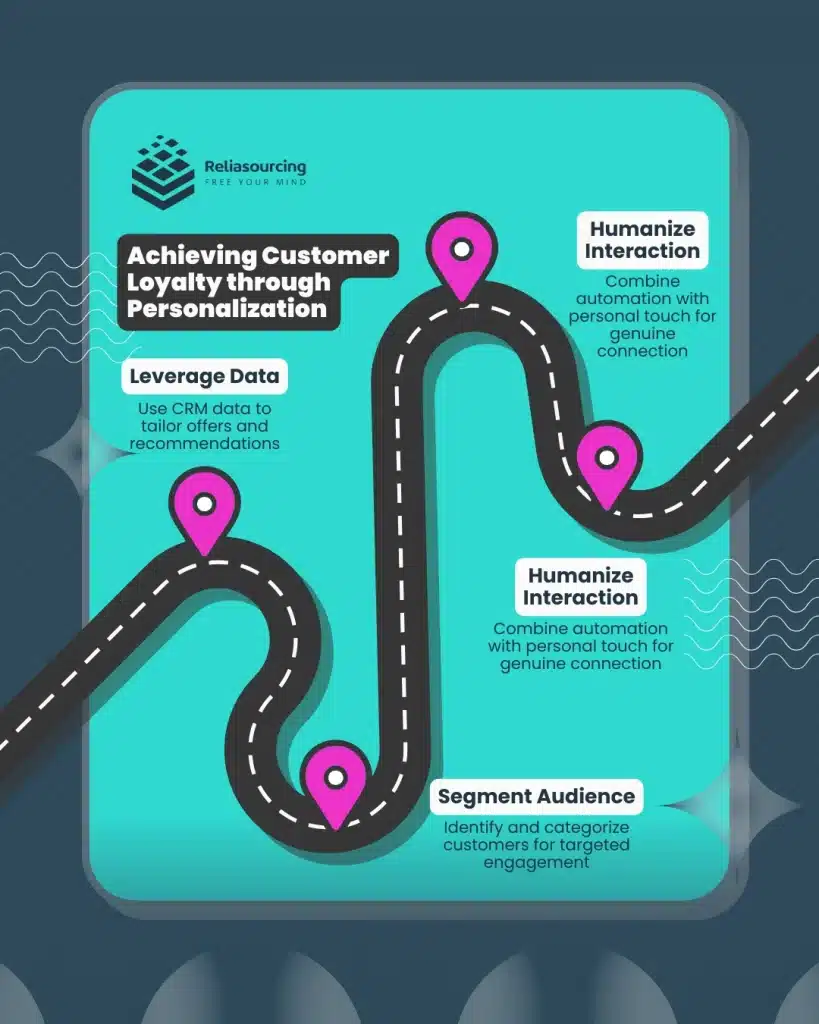
Leverage purchase history and behavior data. Use CRM data to tailor offers and recommendations. Reliasourcing agents analysed spending patterns and playtime in the gaming case study before recommending promotions. When they integrated surveys into conversations and prioritised outreach based on customer profiles, they stabilised revenue around $19,000 per day in late 2024.
Segment your audience. Not all customers require the same level of attention. Identify VIP users, new customers, and at‑risk accounts, then design bespoke engagement strategies for each group. High‑touch outreach to high‑value segments can yield outsized returns.
Humanise interactions. Automated personalisation is only effective when combined with human understanding. Scripted messages feel cold; encourage agents to reference past interactions and show genuine interest. Small gestures like using a customer’s name, recalling previous issues, or thanking them for their loyalty make a big difference.
Real‑world insight
Talia, Head of Customer Service at Edikted, reports that personalisation and agility mattered when scaling quickly:
“The support from Reliasourcing has been instrumental in helping us quickly and efficiently expand our team, enabling us to scale at a pace that matched our growth without compromising on quality.
Thanks to their seamless integration and proactive approach, we’ve seen a significant increase in customer satisfaction and operational efficiency. They consistently go above and beyond to accommodate our evolving needs.
Highly recommend working with them!”
Personalisation has become a universal principle. If you’re responding to a SaaS user’s bug report or helping a borrower complete a loan application, recognising the individual builds trust and converts one‑time buyers into advocates.
5. Monitor KPIs and Improve Based on Data
What gets measured gets improved. Service leaders need to track performance beyond gut feelings.
Key performance indicators such as First Contact Resolution (FCR), Average Handle Time (AHT), Customer Satisfaction (CSAT), Net Promoter Score (NPS), Customer Effort Score (CES), and retention revenue show how well your team is doing.
Day‑to‑day metrics like ticket volume and average response time reveal where bottlenecks exist. Importantly, FCR, the percentage of issues resolved on the first interaction, signals whether agents are empowered and your knowledge base is effective.
Tactics that work

Define your KPIs. For reactive support, FCR and AHT measure efficiency; for experience, CSAT, NPS, and CES capture satisfaction; and for growth, track upsell/retention revenue. If you operate a revenue‑generating support team, tie compensation and recognition programmes to retention and upsell metrics.
Set benchmarks and review them regularly. Comparing your metrics against industry standards reveals whether you’re improving. The branding‑tech client tracked monthly call volume, CSAT, and productivity. Calls rose steadily to over 15,000 per month by early 2025, while CSAT climbed from 3.7 to 4.7, and productivity reached 95%. Plotting data over time exposes trends and informs staffing levels.
Adjust processes based on insights. When productivity dipped, Reliasourcing’s managers added coaching sessions and standardized workflows. With our gaming client, the team shifted from targeted promotions to bucket‑based outreach once they observed diminishing returns. The flexibility kept Average Daily Revenue (ADR) stable even as seasonal patterns fluctuated.
Real‑world insight
Monitoring KPIs doesn’t end after improvement since it should spark innovation. Continuous analysis enabled Reliasourcing’s teams to introduce automated scorecards, segment VIP players, and refine training curricula. Aligning data with human expertise allows you to create a cycle of learning and growth.
Understanding operational metrics
Beyond high‑level KPIs like CSAT and NPS, day‑to‑day performance indicators reveal where your team needs support.
- Ticket volume measures how many customer requests you receive across all channels and provides a direct gauge of demand;
- Monitoring ticket volume helps you spot product pain points and the impact of new releases;
- Average response time quantifies how long it takes to acknowledge an inquiry, while average resolution time tracks the duration from opening to closing a case; and
- Finally, first contact resolution (FCR) measures the percentage of issues resolved on the first interaction.
A high FCR indicates that agents are empowered and your knowledge base is effective; a low FCR points to training or process gaps. Combining these operational metrics with customer satisfaction and revenue data equips you to diagnose bottlenecks and make informed decisions about staffing, training, and technology.
How Outsourcing Enhances Customer Service: The Reliasourcing Advantage
Outsourcing customer service enables strategies that extend your capabilities. For start‑ups juggling product development, marketing, and fundraising, running a world‑class support operation in‑house can distract from core priorities. When you choose the right partner, outsourcing fills resource gaps while preserving quality.
Multi‑channel expertise and 24/7 coverage
Reliasourcing’s teams provide omnichannel support via phone, email, chat, and social media across time zones. Our Philippine‑based agents deliver empathetic, English‑fluent service around the clock, ensuring no call goes unanswered.
Revenue‑driven service
Outsourced support isn’t limited to ticket resolution. Reliasourcing trains agents to identify upsell and cross‑sell opportunities. In the branding‑tech case study, the outsourced team generated $2.7 million in retention revenue and $1.2 million in upsells over 17 months, proving that support can become a center of profit.
Rapid scalability and lower risk
For gaming and e‑commerce companies, seasonal spikes can overwhelm internal teams. Outsourcing allows you to scale headcount quickly without long‑term commitments. When our gaming client’s daily active users surged past 13,000, Reliasourcing’s flexible workforce ensured that Average Daily Revenue continued its upward trajectory. With our loan processing client, they expanded from 9 to 46 representatives within a year, adding a training and quality supervisor to manage growth and maintain quality.
Dedicated training and quality assurance
Reliasourcing’s training programs, continuous feedback, and structured QA processes help maintain brand standards. In loan‑processing, pass rates on the CSR test improved to over 80%, and productivity gains led to new customer conversion rates exceeding 6% and returning‑customer conversion rates over 10%; metrics show that business process outsourcing can outperform some in‑house teams.
Transparent partnership
Outsourcing should be an extension of your business. Reliasourcing prioritises close collaboration and continuous improvement. Our clients highlight how proactive support and regular check‑ins foster trust and alignment. When evaluating providers, look for partners who share your values and commit to long‑term success.
Frequently Asked Questions
What KPIs matter most in customer service?
The key performance indicators that matter most depend on your goals, but you should track efficiency and experience. Monitor First Contact Resolution (FCR) and Average Handle Time (AHT) for efficiency. For expertise, measure Customer Satisfaction (CSAT), Net Promoter Score (NPS), and Customer Effort Score (CES).
If you run a revenue‑generating support team, track upsell and retention revenue. Ultimately, metrics should focus on what matters to your customers: are they satisfied, loyal, and recommending you to others?
Can AI tools improve service or do they reduce personalisation?
AI tools can improve service when used thoughtfully. Chatbots and automated routing handle routine inquiries and reduce wait times. Analytics can highlight patterns that human agents might miss. However, AI should augment and not replace human connection. To balance automation and personalisation, AI can be deployed for simple tasks and provide agents with rich customer context to offer personalised responses; blending can enhance customer service operations while still feeling human.
Can outsourcing customer service improve customer satisfaction?
Yes, outsourcing can improve satisfaction when you partner with specialists. Reliasourcing’s branding‑tech client raised its CSAT scores from 3.7 to 4.7 while handling more than 15,000 calls per month. Outsourcing offers access to trained agents, multilingual capabilities, and 24/7 coverage. Letting experts handle support empowers your in‑house team to focus on product innovation, ultimately delivering better overall experiences.
How do you maintain quality with an outsourced customer service team?
You can maintain quality with an outsourced customer service team by first selecting the right partner. Look for providers that invest in training, offer transparent reporting, and integrate with your systems. Frequent feedback, quality‑assurance monitoring, and continuous coaching ensure that standards remain high. Structured collaboration also fosters an improvement culture across both teams.
Will my customers notice if I outsource support?
When outsourcing is done well, customers won’t notice. They’ll simply receive faster responses and more consistent service. Agents operate under your brand guidelines and use your tone of voice since the objective isn’t to hide outsourcing, it’s to deliver better outcomes. The channel or agent location becomes irrelevant if the interaction meets or exceeds expectations.
Summary: Turn Great Service into Your Competitive Edge
Exceptional customer service doesn’t come along by chance. It’s the result of deliberate strategy, investment, and partnership. Training and empowering your team, listening to feedback, leveraging smart technology, personalising every touchpoint, and monitoring the right KPIs allow you to build a foundation for loyalty and growth. Real‑world examples from Reliasourcing show that these strategies deliver tangible results, from Average Daily Revenue (ADR) increases in gaming to revenue gains in branding technology and loan processing.
Applying the lessons across industries
While the cases above span SaaS, e‑commerce, gaming, and finance, the underlying principles remain consistent: empower your people, listen to your customers, embrace technology, and measure everything.
The success of Reliasourcing’s clients demonstrates that tailoring these common strategies to your industry context yields outsized returns. You can transform support from an afterthought into a strategic advantage that differentiates your brand by mapping the core principles to your unique challenges.
If your start‑up struggles to scale support, consider outsourcing a strategic complement. A specialised partner can provide the manpower, expertise, and technology you need to offer world‑class service without diverting focus from product innovation.
To explore how Reliasourcing can help you enhance your customer service capabilities, reach out through our contact form, and let’s design a solution tailored to your business. And don’t forget to grab your free checklist:
Download our Customer Service Improvement Checklist, a practical guide summarising this article’s tips and providing an actionable roadmap for improving your customer service today.
Turning great service into an advantage will transform your support from a cost center into a catalyst for sustainable growth.

